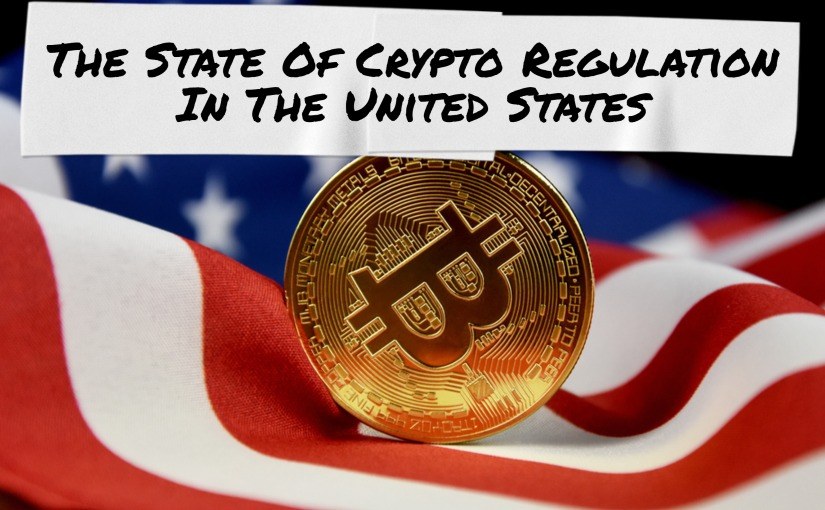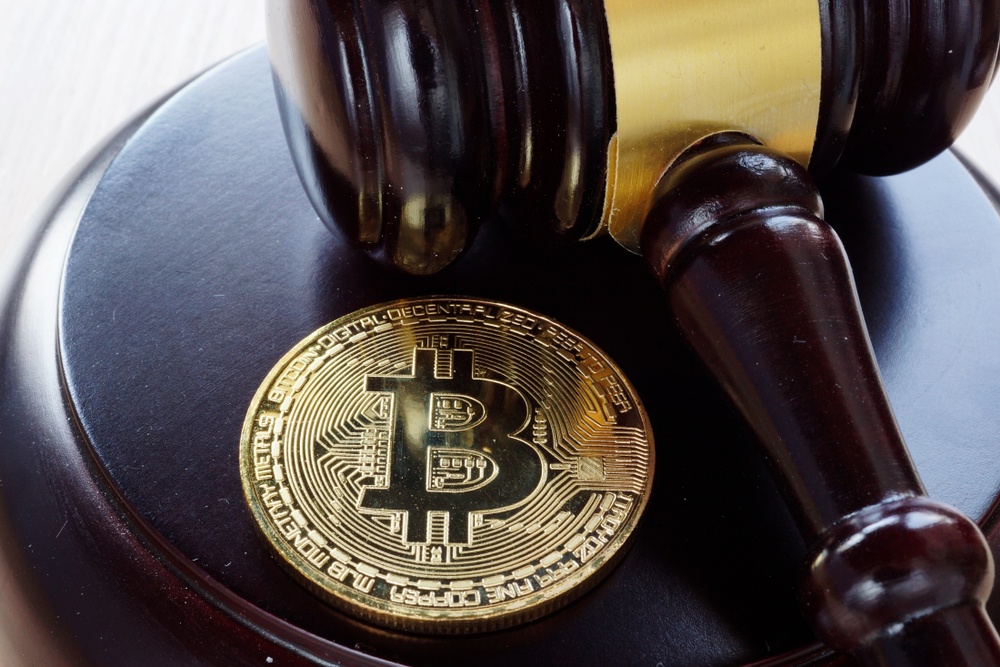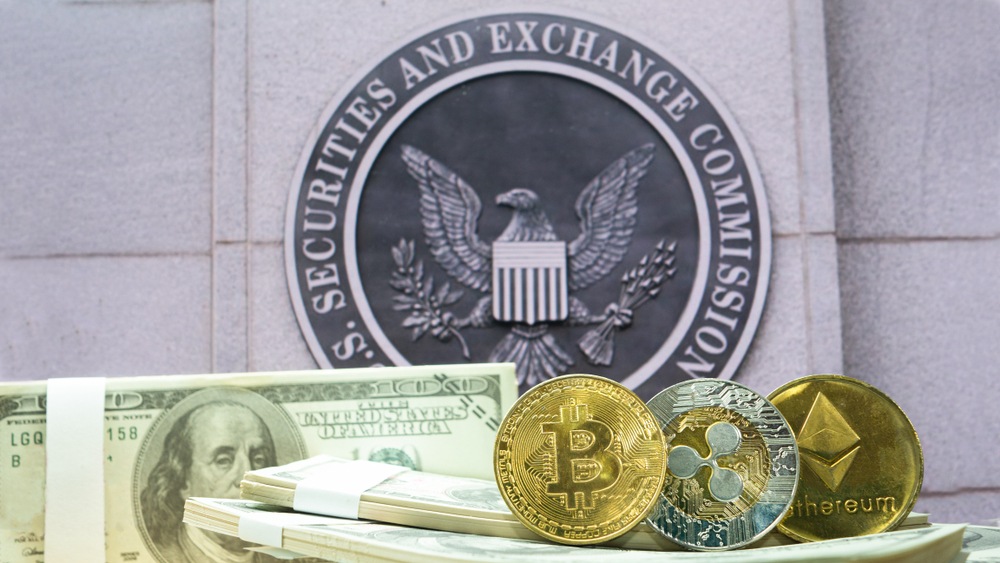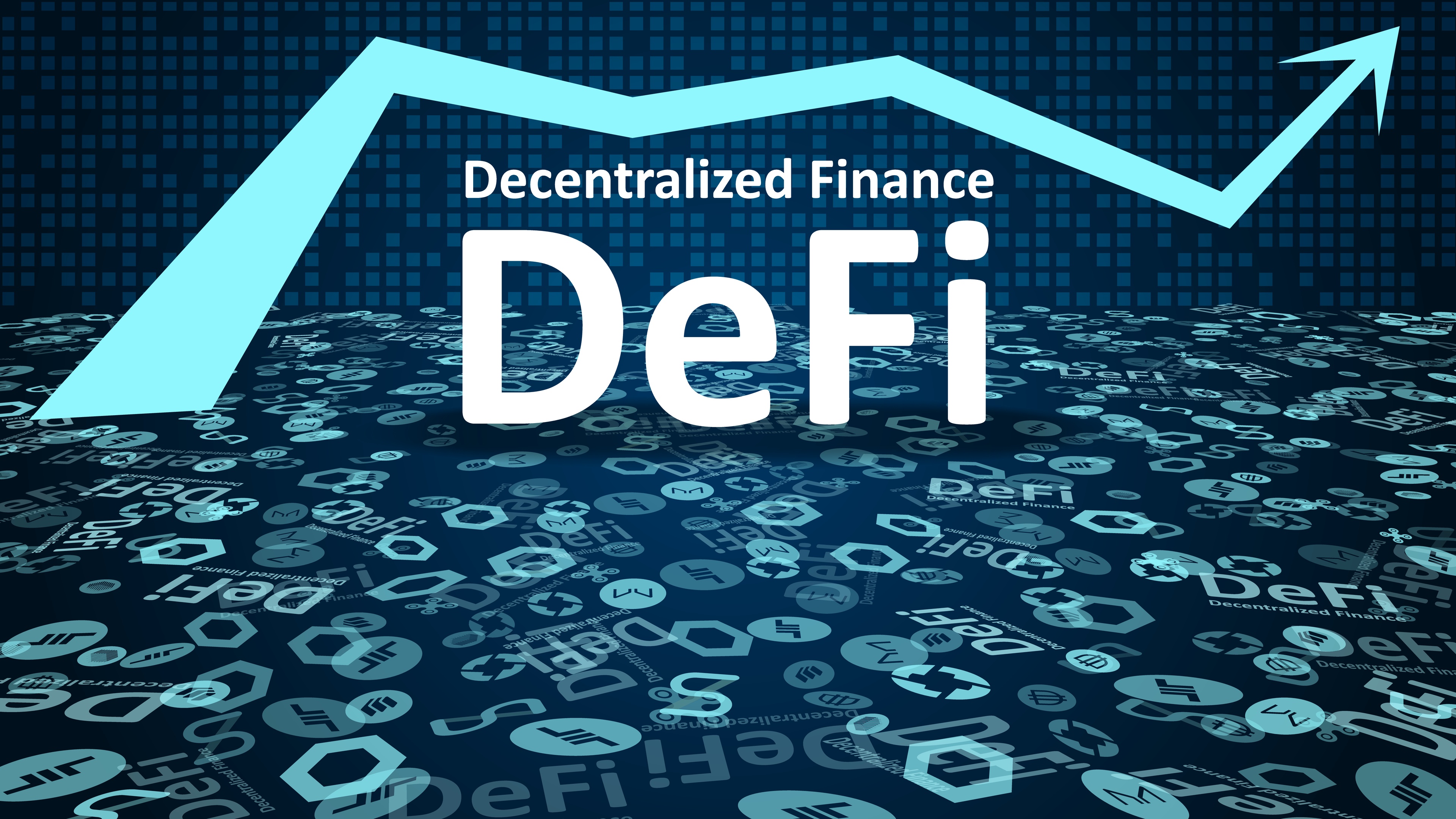The State Of Crypto Regulation In The United States

Regulation will remain a sensitive discussion in the blockchain and crypto realms for obvious reasons. For one, these are nascent technologies based on decentralized and borderless approaches to financial applications. As such, It could take a collective approach by global regulators to cover the crypto economy that is constantly evolving and largely decentralized.
For now, though, each country has begun to acknowledge the innovative power of cryptocurrency and introduce regulations that can help crypto companies in their quest to create and provide legal products and services. While some have taken a crypto-friendly stance, others have been a lot more strict. In this guide, we will take a look at the latest updates in the race to regulate the crypto industry in the United States
Why is crypto regulation important?

Why is crypto regulation important
Some argue that the crypto was never designed to come under the purview of regulators because it was originally introduced to phase out the influence of governments and banks in the global financial economy. In the early years of the crypto industry, many saw this technology as a potential escape from surveillance and other regulatory campaigns that tend to prioritize the minority over the majority.
Bitcoin, which was the first to materialize the potency of decentralized finance, afforded early users a means to sideline bureaucratic and restrictive processes associated with banks. With only a few clicks of the button, you can send money across borders instantly. And so, to the purists, there is no need to overcomplicate a proven system by accepting the inputs of regulators. Doing so would likely diminish the whole essence of adopting crypto technology in the first place.
On the other hand, we have progressive crypto proponents who believe that regulation unlocks more opportunities for crypto technology to become mainstream. The argument revolves around the need to create a structured economy that would see more institutional investors and corporations become actively involved in the crypto industry. Without the establishment of a regulated industry, this group believes that the chances of attaining the next phase of growth are slim. Therefore, to these individuals, the influx of crypto regulation is a welcome development, as long as it helps stakeholders have a clear understanding of what is expected of them to run a legitimate business.
However, regardless of the school of thought crypto proponents subscribe to, crypto regulation is non-negotiable. Now more than ever, regulators have become aware of the growing influence of cryptocurrency on the broader economy and how it threatens monetary sovereignty. Objectively speaking, the first factor motivating the decision of governments and regulators to explore crypto regulations is the risk of losing a tight grip on the creation and distribution of money.
Before the advent of crypto, nobody dared challenge the government’s control over how money was created and distributed. Today, we have a slew of private and community-operated digital assets functioning as viable alternatives to fiat. What this means is that governments do not have complete control over the current financial economy. And for things to go back to how they were, regulators must begin to take proactive steps to eliminate the unfettered autonomy provided by crypto and blockchain technology. Herein lies the factor driving the ongoing debate about stablecoins and the adverse effects they have on America’s economy.
Another factor informing the decision of regulators to take crypto seriously is consumer protection. Investors are increasingly considering the profitability of crypt ventures and investments, thanks to the explosion of DeFi solutions and NFTs. People are now aware of the potential of generating higher yields when they invest their funds in crypto or lock it up in a yield farming service. In summary, the crypto industry is fast becoming mainstream, and yet there are no solid regulatory and standardization systems put in place to protect investors and customers from the apparent risks associated with crypto.
In an interview with Cointelegraph, Geoffrey Goodell, a research associate at University College London and deputy executive director of the UCL Centre for Blockchain Technologies stated that regulators across the globe are slowly realizing that digital assets are here to stay:
“There is a growing realization on both sides of the Atlantic that digital currencies are here to stay and could potentially introduce systemic risk, not only to investors searching for new sources of uncorrelated returns but also to monetary sovereignty.”
In light of this, it is imperative to come up with standards and rules that will guide both crypto service providers and their customers. Historically, the lack of comprehensive crypto regulations has been highlighted as the core factor motivating malicious entities to capitalize on digital assets to perpetrate their evil acts or escape the long hands of the law. And so, the “wild west” tag popularly used to describe the crypto industry summarizes everything you need to know about the space. At times, the landscape is chaotic and susceptible to all kinds of ills, according to critics. Even more alarming is the rate at which new products are being whipped up without much thought put into the safety of users. It also doesn’t help that the ecosystem is still in the experimental stage. In essence, regardless of the level of development achieved in the last ten years or so, there is still a long way to go when it comes to user protection, especially in the DeFi sector.
When discussing crypto regulation, it is also impossible to leave out the role of regulation in the ongoing institutionalization of the crypto industry. Ever since 2017’s bull run, stakeholders have unanimously concluded that the next phase of crypto growth may be induced by the influx of corporations and institutional investors in the crypto scene. Many analysts have predicted that the inflow of capital from institutional investors could potentially bring about a boost in crypto engagement. Despite this massive expectation, not a lot has been recorded as regards institutional adoption.
According to experts, this is due to the lack of robust crypto regulations necessary for an enterprise-enabled industry. Notably, institutional investors can establish their presence in the highly volatile crypto market only if there is guidance on how best to approach and handle crypto investment on behalf of their clients. All in all, they are charged with the responsibility of making investment decisions that are in the best interest of their clients, and blindly adopting uncertain digital asset-based ventures is evidently not a wise investment decision. This limitation is prevalent in the DeFi scene where there is no existing regulatory framework whatsoever.
The race to regulate crypto intensifies
Having highlighted the importance of crypto regulations, let us explore the current stance of regulators on crypto. While each country has a unique narrative brewing in its crypto industry, I will be focusing more on the state of crypto regulation in the United States.
Stablecoin

Stablecoin
In the last few months, regulators and lawmakers in the United States have begun to take more interest in stablecoins and how they operate. This crypto sector has come under scrutiny because most of the popular stablecoins are backed by the US dollar. Some of the prominent ones are Tether (USDT), USD Coin, and BUSD. Just recently, the Chairman of the Securities and Exchange Commission (SEC), Gary Gensler likened stablecoins to the poker chip of the “wild west.” In other words, he believes that these digital assets enable an uncertain ecosystem that is probably destined for a catastrophic end.
Gensler explained further that most crypto exchanges and lending platforms ought to register with the SEC because the probability that the cryptocurrencies they handle are securities is high.
“Those platforms should come in, and they should figure out how to register. Not many have, and so I do really fear that we’ll keep bringing these enforcement cases but there’s gonna be a problem … and, frankly, when that happens I think a lot of people are going to get hurt.”
Furthermore, Gensler stated that it is imperative to take predictive measures now before it is too late:
“I don’t think it’s a good idea to wait until there’s a spill in aisle three. If we don’t do anything and there’s never a spill in aisle three, great … I think there’s just a lot of warning signs and flashing lights that we might have a spill on aisle three and I’d rather get ahead of it.”
Apparently, Gensler’s view seems to resonate with other key figures vital to the formation of crypto regulations at the federal level. Earlier this month, Gensler made his personal view on the risk associated with stablecoin known when he virtually appeared before the European Parliament on September 1, 2021. In his remark, he explained that stablecoin could create an opportunity for individuals and entities looking to sidestep sanctions and anti-money laundering law:
“The second area I’ll highlight is the centrality of stablecoins — crypto tokens pegged to the value of fiat currencies — to this market. You’ve heard about Facebook Diem, but we already have an existing stablecoin market worth $116 billion. These tokens are embedded in crypto trading and lending platforms. In July, nearly three-quarters of trading on all crypto trading platforms occurred between a stablecoin and some other token. Thus, the use of stablecoins on these platforms may facilitate those seeking to sidestep a host of public policy goals connected to our traditional banking and financial system: anti-money laundering, sanctions, and more.”
Interestingly, regulators and key figures in Europe share a similar sentiment. For instance, Noel Quinn, CEO of HSBC Group, the largest European bank, in an article titled “New forms of digital money could spur growth” outlined a similar view about stablecoins. According to him, central bank digital currencies (CBDCs) offer a more stable alternative to privately owned or operated stablecoins. He wrote:
“One banking innovation being developed is a new form of digital money known as Central Bank Digital Currencies (CBDCs). These are legal tender backed by a central bank or government authority, which means they are transparent and stable – avoiding many of the risks associated with some other forms of digital money, particularly cryptocurrencies and some stablecoins. They are already operating in certain countries and a number of major central banks are actively developing and piloting their own versions.”
Quinn went further to write that the regulated nature of CBDCs and are effectively anchored to central bank money:
“CBDCs are one new form of digital money. The critical difference between CBDCs and other types of digital money, such as stablecoins and cryptocurrencies, is that the latter are both forms of private money. Private money itself is nothing new. Current commercial bank money is privately created and widely used. But commercial bank money is anchored by central bank money and closely regulated, reflecting its systemic importance. If stablecoins and cryptocurrencies are to become relied upon in the same way, they will also require regulation that is commensurate with the risks they create. Even then, only designs that are sufficiently well anchored to achieve price stability, and correspond with current approaches to financial crime prevention, are likely to be useful as a reliable and safe means of payment.”
Drawing from Quinn’s statements, it is clear that there is concern that privately-owned stablecoins may not have a stable peg to their underlying fiat. A similar concern has been raised repeatedly regarding the viability of Tether (USDT), which currently has a $68 billion market cap. According to Goodell, at the center of this scandal is the apparent lack of transparency and how regulators would respond to situations where the issuer fails to keep its end of the deal by maintaining a stable peg with fiat:
“When a private-sector stablecoin issuer fails to fulfill its promise to maintain a peg, would the European Central Bank bail out holders of stablecoins? If the answer is definitely yes, then the issuer is effectively doing the central bank’s job by creating a central bank digital currency on its behalf. If the answer is possibly no, then the stablecoin isn’t so stable and should trade at a discount.”
Understandably, stablecoins are receiving a lot of attention from lawmakers and regulators, considering CBDCs are fast becoming the go-to monetary policy for an increasingly digitized economy. Most countries are looking into the possibility of a CBDC. Therefore, stablecoins, particularly the privately owned ones, are destined to be in the direct line of fire when regulators go all out to eliminate the competition. CBDCs are basically the regulated variant of the common stablecoins since the goal is to ensure that the value of the digital asset tracks the value of a fiat currency. As such, it is no surprise that Facebook has failed to make headway in its quest to launch a digital asset of its own.
Crypto exchange

Crypto exchange
As mentioned earlier, the SEC believes that the operations of crypto exchanges should fall under its jurisdiction since they very much facilitate the trade of digital assets that likely qualify as securities. It is also notable that these platforms are the de facto gateways to the crypto market. Hence, regulating such infrastructures unlock the possibility to surveil the crypto market. Some of the standards that are globally imposed on exchanges are KYC and anti-money laundering rules.
In August, Marc Powers, in an extensive opinion piece on Cointelegraph titled “Broker disintermediation and unregulated crypto exchanges cause major concerns,” highlighted the constant regulatory tussle between regulators and crypto exchanges from the ICO era up until now:
“There is a clear rising chorus of alarm in statements by government regulators in the United States, England, China, Southeast Asia and elsewhere, which are focused now more than ever on the unregulated exchanges that offer trading of derivatives and spot markets in numerous cryptocurrencies. These efforts follow regulators having tamped down on the rampant initial public offering of cryptocurrencies in the form of initial coin offerings, simple agreements for token contracts, and security token offerings during the 2016–2020 period.”
Powers noted that in some cases, the highhandedness of regulators is justified because exchanges have shown time and again that they are prone to prioritize profit over the safety of customers. He wrote:
“In some measure, these fears are justified — to the extent that investor protection is compromised by allowing unacceptable risks to investors who may not understand or appreciate the downside of their trading activities. An example of this is margin trading that allows significant leverage based upon only a small deposit of funds or tokens in an account. Binance, until recently, allowed 125x leverage on futures purchases of Bitcoin. (It reportedly reduced leverage down to 20x in July, presumably due to pressure from various international regulators.) In other words, if you had $10,000 in assets in your account, you could purchase up to $1.25 million worth of cryptocurrencies! That is insane leverage, filled with potential problems for both the exchange and the customer.”
While summarizing the cascading effects of the unregulated crypto exchanges, Powers noted that the absence of insured and regulated brokers exposes traders and investors to high risks:
“What is fascinating to me about all this is the fact that blockchain “disintermediation,” the mantra of crypto enthusiasts and supporters, is here — at least for the brokerage community. The buying and selling of crypto are occurring directly by the customer with the exchange, with no broker in between to facilitate the trade. The middleman has been cut out of the process. There is no broker to check on the suitability of the trading activity — no broker to be there to hold and protect the digital assets. These digital assets are held directly with the exchange where one trades or delivered out to a personal digital wallet of the investor. If the exchange fails, the investors could lose everything. There is no SIPC to reimburse the investor. Nor, as of now, is there any federal or countrywide regulator to examine the books and records of the exchange, to receive reports on the financial health and activities of the firm, or to ensure liquidity and that it is not allowing what most people consider bad behavior, such as market manipulation and insider trading.”
Using Binance as a case study, Powers listed all the regulatory woes of Binance and how the culmination of these various battles could erase the credibility of the exchange in the United States and other countries:
“It is no wonder, then, that Binance has been the target of the Financial Conduct Authority (FCA) in the United Kingdom and of other countries in Europe and Asia — or that the new SEC chairman, Gary Gensler, is voicing concerns. Back in late June, the FCA ruled that Binance was operating an unregistered exchange for U.K. citizens. Following that announcement, a number of British banks stopped allowing their client accounts to send funds to Binance or buy crypto using credit cards. According to May reports, the exchange is also under investigation by the U.S. Justice Department and IRS, which may be looking into money laundering violations and tax offenses. It is also an ominous sign that the former acting comptroller of the currency, Brian Brooks, resigned from his position as CEO of Binance.US after only four months. Knowing Brooks, I speculate that his departure arose because he was not willing to put his reputation on the line for an organization that he found beyond redemption and that flouted numerous rules and regulations of various countries.”
Powers advised that the only way exchanges can protect their solutions from regulatory-based disruptions is to identify and fulfill, with the help of their counsel, all the registration responsibilities applicable to their type of business:
“While it seems that DeFi Money Market (a so-called decentralized exchange shut down by the SEC for issuing securities labelled as governance tokens) did not operate in the same way as many decentralized exchanges out there, it might be advisable that any platforms that solicit U.S. investors do a thorough analysis with their counsel of any potential registration issues — among them, registration as an exchange, broker-dealer, investment adviser, custodian, money transmitter or issuer under various laws. Otherwise, one may find themself in the crosshairs of governments and their regulatory bodies — or worse, criminal authorities. In this regard, it would be worth reviewing the first SEC case against a crypto exchange, EtherDelta, from November 2018.”
Decentralized finance

Decentralized finance
Perhaps, one of the things to take home from the influx of crypto regulations is the fact that the operations of exchanges provide regulators with an inroad into the decentralized and largely evasive crypto market. For regulators to properly track and implement effective frameworks, they must first identify centralized gateways which will make it easier to track the activities of crypto users. This is where crypto exchanges come in. Since a majority of these changes are run by individuals, it is much straightforward when imposing and enforcing laws. This is unlike what we have in the decentralized finance terrain where protocols are self-sustainable and are sometimes community-governed. In this case, it becomes complex to identify culprits or set standards that will fit all decentralized protocols.
However, this has not stopped regulators from exploring and attempting to regulate decentralized finance. It remains to be seen how regulators go about imposing KYC and AML procedures on DeFi protocols governed by smart contracts. Also, who should they hold responsible whenever these platforms breach existing laws, knowing fully well that most are transitioning into a community-governed model? This question becomes even harder to answer when the developers of such DeFi platforms choose to remain anonymous.
Mark Lurie, CEO of Shipyard Software Inc. believes that if developers are not liable then the next set of stakeholders that might come under scrutiny are liquidity providers. Lurie wrote:
“First, if DeFi developers aren’t liable, who is? The more logical party may be liquidity providers (LPs). After all, it is their capital in each pool that is the counterparty to each trade. While crypto-native LPs tend to shrug off this responsibility, traditional institutions and their personally liable officers need to know they are not inadvertently facilitating illegal transactions before allocating funds on behalf of their investors. Institutional capital will surely be required to catalyze the next phase of DeFi’s growth, so the DeFi community must find a way to offer regulators and traditional banks a clear-cut solution.”
According to Lurie, it is advisable for DeFi protocols to self-regulate. He added that this approach will improve the chances of becoming a more appealing offering to mainstream investors. It is also a better choice than waiting for the imminent barrage of regulations targeted at phasing out non-compliant DeFi solutions:
“DeFi will never go mainstream without accepting AML/CFT requirements. What’s more, if the DeFi community fails to regulate itself, governments will surely do the job for us — and with a much heavier hand. Just look at the infrastructure bill, which aims to hold DeFi developers responsible for users’ lack of tax compliance. Hastily written AML/CFT legislation for crypto could be even more debilitating. Self-compliance is the moral thing to do, and it has the added benefit of ensuring the industry’s long-term survival. The alternative is waiting for the hammer of a much tougher forced compliance. The choice is ours.”
Already, DeFi operators have been classified as virtual asset service providers by the Financial Action Task Force (FATF). This means that they fall under the set of operators required to adhere to KYC and AML laws applicable to crypto exchanges. It remains to be seen whether this law is enforceable given that most DeFi platforms run systems incompatible with KYC implementations. Despite the lack of tangible reasons to conclude that the DeFi sector and regulators would meet halfway, Lawrence Wintermeyer believes that the innovative nature of DeFi could spur regulators to find the best way to create a standard for the emerging sector without necessarily stifling growth. He wrote:
“Given the opportunities for the innovation of the global financial service sector that DeFi offers, with great benefits for consumers, industry and the economy, lawmakers will want to strike a careful balance between regulation and innovation. Suffice to say, DeFi will remain one of the most exciting and fast-moving segments of fintech for plenty of time to come.”
Bitcoin ETFs

Bitcoin ETFs
Another topic that continues to feature prominently in the heart of the crypto regulation discussion is bitcoin ETF. Recall that that inflow of institutional investors has been identified as a potential turning point for the crypto market. For many, a development that could fast-track institutional adoption is the approval of a bitcoin ETF by the SEC, which is why a long list of companies have joined the race to establish the first bitcoin ETF in the United States. While several companies have submitted that intent to run a bitcoin ETF, the SEC is yet to approve none. According to the regulator, the volatile nature of bitcoin and its apparent susceptibility to market manipulations are some of the reasons it has opted for a more cautious approach to the approval of bitcoin-backed ETFs.
Recently, the chairman of the SEC hinted that the regulatory body might consider approving a bitcoin futures ETF rather than a physically-backed ETF. The difference between the two is that one is futures backed while the other is directly anchored to the price of bitcoin. In essence, the price of the former may drift away from the market price of bitcoin depending on the sentiments of futures traders. Chris Kuiper, vice president at CFRA Research, explained the potential drawbacks of a bitcoin futures ETF in an interview with Cointelegraph. He stated:
“While the futures market is more regulated, futures are a derivative and therefore abstracted away from the underlying commodity. So, it seems like there should be more concern about potential market manipulation with the Bitcoin futures market given it is leveraged and cash settled, with no actual Bitcoin needing to be exchanged or settled with.”
Kuiper added that the establishment of a bitcoin futures ETF could speed up the approval of a physically-backed bitcoin ETF. He argues that the success of bitcoin futures ETFs may prove to the SEC that bitcoin ETFs hold even more opportunities:
“We only think it is a matter of time. Given that the SEC allows gold ETFs based on futures, it would be hard for them to not eventually approve a Bitcoin ETF also based on the now well-established Bitcoin futures market.”
Crypto lending

Crypto lending
Surprisingly, the crypto lending sector has had its fair share of regulatory disruption in the last couple of months. Platforms like Celsius and BlockFi have had to defend their business model to state regulators. One of the major talking points has been the interest-generating accounts of these services and whether they fall under the purview of the SEC. It would seem like regulators in the United States are keener to scrutinize the operations of crypto lending services. Another clear example of how intensely the SEC at the federal level is also looking into this issue was first brought to the fore when Coinbase revealed that it had been threatened by the regulatory body to shelve its plan to launch a lending service that promises a 4% APY to users.
In a blog post written by Paul Grewal, Chief Legal Officer at Coinbase, it was revealed that Coinbase had informed the SEC that it planned on introducing a new lending product for over six months. As such, it came as a surprise that the regulator has decided to sabotage its plans. Grewal wrote:
“Coinbase has been proactively engaging with the SEC about Lend for nearly six months. We’ve been eager to hear their perspective as we explore innovative ways for our customers to gain more financial empowerment on Coinbase. Specifically for Lend, we’re seeking to allow eligible customers to earn interest on select assets on Coinbase, starting with 4% APY on USD Coin (USDC). We could have simply launched the product but we chose not to. This is far from the norm in our industry. Other crypto companies have had lending products on the market for years, and new lending products continue to launch as recently as last month. But Coinbase believes in the value of open and substantive dialogue with our regulators. So we took Lend to the SEC first.”
Based on Grewal’s account of the situation, the SEC did not give a tangible reason as to why it believes that Coinbase’s crypto lending product is not compliant with existing laws:
“Despite Coinbase keeping Lend off the market and providing detailed information, the SEC still won’t explain why they see a problem. Rather they have now told us that if we launch Lend they intend to sue. Yet again, we asked if the SEC would share their reasoning with us, and yet again they refused. They have only told us that they are assessing our Lend product through the prism of decades-old Supreme Court cases called Howey and Reves. The SEC won’t share the assessment itself, only the fact that they have done it. These two cases are from 1946 and 1990. Formal guidance from the SEC about how they intend to apply Howey and Reves tests to products like Lend would be a big help to regulating our industry in a responsible way.”
Judging by the outcome of Coinbase’s proposed lending product, it is safe to say that lending might be the latest crypto sector to come under intense regulatory scrutiny in the United States.
